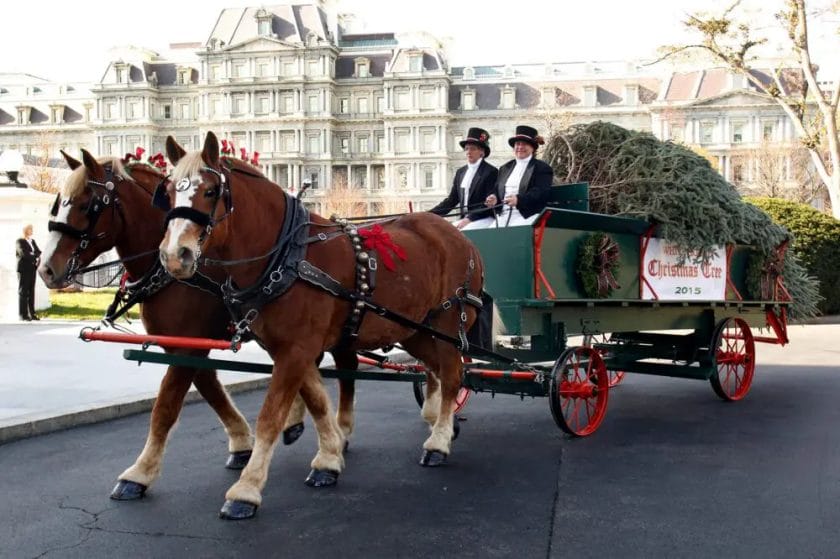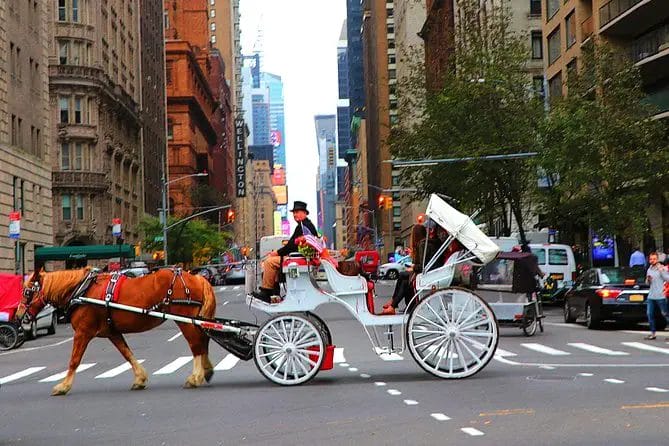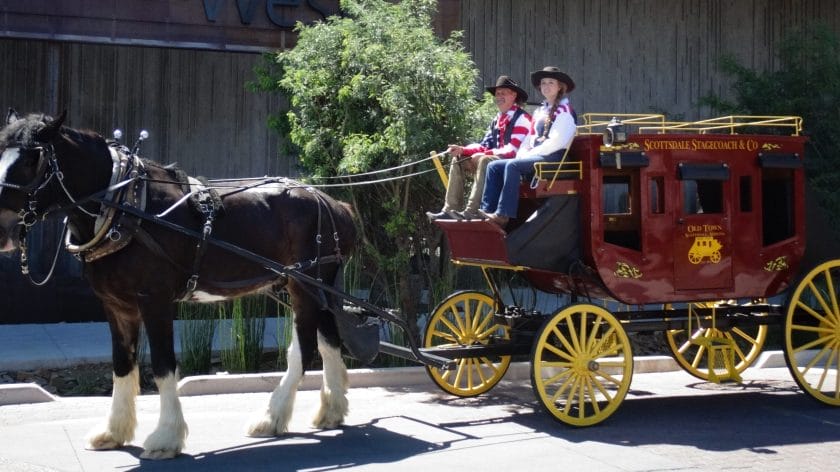Carriage rides have been a long-standing tradition, but concerns arise about the impact they may have on horse well-being. While not inherently bad, carriage rides can pose risks if proper care and regulations are not in place. Horses used for these rides should be well-trained, physically fit, and provided with regular breaks and appropriate living conditions.
It’s crucial for carriage operators to prioritize the comfort and welfare of their horses, ensuring they are not overworked or subjected to extreme weather conditions. Implementing strict guidelines and monitoring practices can help mitigate any potential harm and allow for a more humane carriage ride experience.

Impact of Carriage Rides on Horses’ Physical Well-being
Carriage rides have long been a popular tourist attraction in many cities. They provide a unique experience, allowing people to explore the city while enjoying the charm of horse-drawn carriages. However, it is important to consider the impact of these rides on the well-being of the horses involved. In this section, we will delve into the potential physical effects of carriage rides on horses and explore ways to ensure their physical well-being.
1. Physical Strain and Fatigue
Carriage rides often involve long hours of continuous work for the horses. They are required to pull heavy loads, navigate through traffic, and endure various weather conditions. These activities can put significant physical strain on the horses, leading to fatigue and exhaustion.
To mitigate this impact, it is crucial to implement regular breaks during the carriage rides. Allowing the horses to rest and recover will help prevent overexertion and reduce the risk of injuries. Additionally, proper conditioning and training of the horses can build their stamina and muscle strength, enabling them to handle the demands of carriage rides more effectively.
2. Foot and Hoof Health
The hard surfaces of city streets can pose a challenge to the horses’ foot and hoof health. Constantly walking on pavement can lead to excessive wear and tear on the hooves, making them more susceptible to injuries and hoof-related conditions such as lameness.
To address this issue, regular hoof care is essential. Trimming and shoeing the horses’ hooves at appropriate intervals can help maintain their structural integrity and minimize the risk of injuries. Providing soft, padded surfaces in the stable area can also offer relief to the horses’ feet after long carriage rides.
3. Heat Stress
During the summer months, carriage rides can expose horses to high temperatures and heat stress. The combination of physical exertion and warm weather can lead to dehydration, heatstroke, and other heat-related health issues.
To protect the horses from heat stress, it is vital to provide ample access to fresh water and shade. Regular breaks in shaded areas or scheduled rides during cooler parts of the day can also help mitigate the impact of heat on the horses’ well-being. Monitoring the horses closely for signs of distress and taking immediate action when necessary is crucial for their safety.
4. Traffic and Safety Risks
Carriage rides often take place in busy urban areas, exposing horses to potential traffic hazards. The noise, fast-moving vehicles, and unpredictable situations can be stressful for horses and increase the risk of accidents or injuries.
To ensure the safety of both horses and passengers, it is essential to have well-trained carriage drivers who are experienced in maneuvering through traffic. Implementing safety measures such as reflective gear, proper lighting on the carriages, and following designated carriage routes can also minimize the risks associated with traffic.
5. Weight Limits and Unbalanced Loads
Proper weight distribution is crucial for the well-being of carriage horses. Carriages should be designed and loaded in a way that distributes weight evenly, preventing excessive strain on specific parts of the horses’ bodies.
Setting weight limits for passengers and luggage can help ensure that the horses are not overloaded. Regular inspections of carriage equipment, including harnesses and fittings, are also necessary to identify any potential issues that could cause discomfort or injury to the horses.
Summary
While carriage rides offer a nostalgic and enjoyable experience for tourists, it is essential to prioritize the physical well-being of the horses involved. Regular breaks, proper conditioning, hoof care, heat stress management, traffic safety measures, and weight distribution are all crucial factors that contribute to ensuring the horses’ physical well-being. By implementing these measures and continuously monitoring the horses’ health, we can create a more responsible and sustainable carriage ride experience.

The Effects of Carriage Rides on Horses’ Emotional State
Carriage rides have long been a popular tourist attraction in many cities around the world. These majestic horses, pulling elegant carriages, create a nostalgic and charming atmosphere. However, it is important to consider the potential effects of carriage rides on the emotional state of the horses.
1. Physical discomfort and stress:
Carriage rides can subject horses to physical discomfort and stress. The constant pulling of heavy carriages on hard surfaces can strain their muscles and joints, leading to fatigue and discomfort. Additionally, the confined spaces and lack of movement during long rides can cause stress and anxiety in horses.
2. Exposure to traffic and noise:
Carriages are often seen in busy city streets, where horses are exposed to loud noises, honking cars, and unpredictable traffic. This constant exposure to the chaotic urban environment can be overwhelming and stressful for the horses, leading to heightened anxiety and fear.
3. Lack of control and freedom:
Horses, by nature, are free-spirited animals that thrive on open spaces and the ability to move freely. In carriage rides, they are confined to a specific route and are under the control of their handlers. This lack of control and restriction of movement can lead to frustration and a sense of confinement for the horses.
4. Exhaustion and overworking:
Some carriage horses are subjected to long working hours without adequate rest and breaks. This can lead to physical exhaustion and mental fatigue, negatively impacting their emotional well-being. Overworking horses can also result in health issues and decreased lifespan.
5. Lack of social interaction:
Horses are herd animals that thrive on social interaction with other equines. During carriage rides, they are often isolated from their peers, which can lead to feelings of loneliness and isolation. The absence of social interaction can contribute to stress and emotional distress for the horses.
It is important to recognize the potential negative effects of carriage rides on the emotional state of horses. As caretakers and consumers, we must advocate for the well-being and humane treatment of these animals. Taking steps to ensure proper rest, breaks, and suitable working conditions can help mitigate the emotional strain experienced by carriage horses.

Safety Measures to Consider for Horse-drawn Carriage Activities
When it comes to horse-drawn carriage activities, ensuring the safety of both the horses and the passengers is of utmost importance. These activities provide a unique and nostalgic experience, but it is crucial to implement proper safety measures to prevent any accidents or injuries. In this section, we will discuss some essential safety precautions to consider for horse-drawn carriage activities.
1. Proper Training and Certification
Before engaging in horse-drawn carriage activities, it is essential for the drivers to undergo proper training and certification. They should have a thorough understanding of handling and driving horses, as well as knowledge about the carriage equipment. Training programs should cover topics such as horse behavior, harnessing, driving techniques, and emergency procedures. Certification ensures that drivers have met the necessary requirements to safely operate horse-drawn carriages.
2. Regular Maintenance and Inspection
Regular maintenance and inspection of the carriages and harnessing equipment are vital to ensure their safety and functionality. Carriages should be inspected for any signs of wear and tear, such as loose bolts or damaged wheels. Harnessing equipment, including bridles, reins, and harnesses, should also be regularly checked for any signs of damage. Any faulty or worn-out components should be immediately repaired or replaced.
3. Proper Horse Care
The well-being of the horses used in carriage activities should be a top priority. Horses should receive proper care, including regular veterinary check-ups, vaccinations, and grooming. They should be housed in a clean and comfortable environment, with access to fresh water and quality feed. Adequate rest periods should be provided to prevent overexertion, and horses should be given breaks during long carriage rides.
4. Safe Route Planning
Before embarking on a horse-drawn carriage ride, it is crucial to plan the route carefully. Routes should avoid high-traffic areas and busy intersections to minimize the risk of accidents. Paved roads with smooth surfaces are preferable to ensure a comfortable ride for both the horses and passengers. It is also essential to consider the weather conditions and avoid routes that may be hazardous during inclement weather.
5. Passenger Safety Guidelines
Passengers should be briefed on safety guidelines before the carriage ride begins. They should be informed about the proper way to board and exit the carriage. It is important for passengers to remain seated and refrain from making sudden movements or loud noises that may startle the horses. Children should be supervised by adults at all times during the ride. Additionally, it is advisable for passengers to wear appropriate footwear and avoid dangling any personal belongings outside the carriage.
6. Emergency Preparedness
Having a well-defined emergency plan is crucial for horse-drawn carriage activities. Drivers should be equipped with a first aid kit and have knowledge of basic first aid procedures. They should also be trained to handle emergency situations, such as a runaway horse or an overturned carriage. Communication devices, such as a mobile phone or a two-way radio, should be readily available to contact emergency services if needed.
7. Weather Considerations
Weather conditions can significantly impact the safety of horse-drawn carriage activities. Carriage rides should be suspended during extreme weather conditions, such as heavy rain, thunderstorms, or extreme heat. Horses should be adequately protected from adverse weather conditions, with appropriate blankets or shelter. It is important to regularly monitor weather forecasts and make informed decisions regarding the feasibility of conducting carriage activities.
In summary, ensuring the safety of both the horses and passengers during horse-drawn carriage activities requires careful planning, proper training, regular maintenance, and adherence to safety guidelines. By implementing these safety measures, individuals can enjoy the nostalgic charm of horse-drawn carriage rides while minimizing the risk of accidents or injuries.
Alternatives to Carriage Rides for Horse Welfare
Horse-drawn carriage rides have long been a popular tourist attraction in many cities around the world. However, concerns about the welfare of the horses involved have led to a growing demand for alternative forms of transportation that prioritize animal well-being. In this section, we will explore some of the alternatives to carriage rides that can provide a more ethical and sustainable experience for both tourists and horses.
1. Electric and Hybrid Vehicles
One of the most environmentally friendly alternatives to carriage rides is the use of electric or hybrid vehicles. These vehicles offer a quieter and emission-free mode of transportation, reducing both noise pollution and air pollution. Electric or hybrid vehicles can be designed to resemble traditional carriages, providing a nostalgic and charming experience for tourists without compromising on horse welfare.
2. Bicycle Carriages
Another alternative to horse-drawn carriages is the use of bicycle carriages. These carriages are powered by human energy, making them a sustainable and cruelty-free option. Tourists can enjoy a leisurely ride while experiencing the sights and sounds of the city, all while knowing that no animals are being exploited for their enjoyment.
3. Trolley Buses
Trolley buses, also known as electric buses, are another viable option for replacing carriage rides. These buses are powered by electricity and run on designated routes, offering tourists a convenient and eco-friendly way to explore the city. Trolley buses can be designed to resemble traditional horse-drawn carriages, providing a similar aesthetic appeal without the use of animals.
4. Walking Tours
A more intimate and immersive alternative to carriage rides is the use of walking tours. These tours allow tourists to explore the city on foot while being guided by knowledgeable tour guides. Walking tours provide a more personal experience, allowing visitors to interact with locals, discover hidden gems, and learn about the city’s history and culture.
5. Electric Scooters
Electric scooters have gained popularity in recent years as a convenient and eco-friendly mode of transportation in urban areas. Tourists can rent electric scooters to explore the city at their own pace, without relying on animal-powered transportation. Electric scooters are lightweight and easy to maneuver, making them an ideal alternative for tourists who prefer a more independent and flexible travel experience.
In summary, there are various alternatives to carriage rides that prioritize horse welfare while still providing an enjoyable and memorable experience for tourists. From electric and hybrid vehicles to bicycle carriages, trolley buses, walking tours, and electric scooters, these alternatives offer sustainable and cruelty-free options for exploring the city. By embracing these alternatives, we can create a more compassionate and responsible tourism industry that respects the well-being of animals.
FAQs
Are carriage rides bad for horses?
Carriage rides can be stressful for horses due to the noise, traffic, and long hours. They may suffer from heat exhaustion, traffic accidents, and overworked muscles. Therefore, it’s important for carriage operators to follow strict regulations to ensure the well-being and welfare of the horses.
Conclusion
In conclusion, the question of whether carriage rides are bad for horses is a complex one. While some argue that these rides can cause stress and physical strain for the animals, others maintain that when properly regulated and monitored, carriage rides can be a safe and enjoyable experience for horses. It is essential to prioritize the well-being and welfare of the animals by implementing strict guidelines and ensuring regular veterinary check-ups. By striking a balance between enjoying carriage rides as a cultural experience and ensuring the horses’ comfort and health, we can create a more ethical and sustainable practice.
